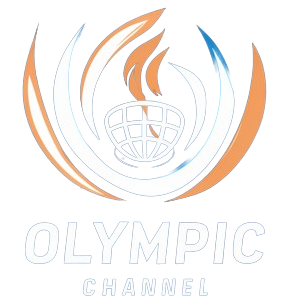Are you ready to take on the ultimate endurance challenge? The Olympic triathlon distances offer a thrilling and demanding race that will test your physical and mental limits. In this comprehensive guide, I’ll break down the distances, share my personal experiences, and provide you with valuable insights to help you conquer this incredible feat.
Breaking Down the Olympic Triathlon Distances
The Olympic triathlon distances consist of a 1.5 km swim, 40 km bike, and 10 km run. It’s essentially double the length of a sprint distance triathlon and half the distance of a 70.3 triathlon. The swim is typically held in open water, while the bike and run segments take place on roads.
When I first contemplated tackling the Olympic distance, I was both excited and nervous. It seemed like a daunting challenge, but I knew that with proper training and preparation, I could achieve my goal.
In my experience, the Olympic triathlon distance is the perfect balance between speed and endurance. It requires a well-rounded skill set across all three disciplines and pushes you to your limits without being as grueling as longer distances like the 70.3 or full Ironman.
Preparing for an Olympic Triathlon: Training and Time Commitment
Training for an Olympic triathlon demands dedication and discipline. On average, athletes can expect to spend 4-7 hours per week training across the three disciplines. Consistency is key when preparing for this challenging race distance, as it is an endurance event that requires careful planning.
A typical finish time for an Olympic triathlon ranges from 2-4 hours, depending on your fitness level and experience. It’s essential to gradually build up your endurance and intensity over time to avoid injury and ensure peak performance on race day.
“Olympic triathlon training is not for the faint of heart,” says renowned triathlon coach Sarah Thompson. “It requires a well-structured plan that balances swimming, cycling, and running while also incorporating strength training, proper nutrition, and recovery.”
Olympic Triathlon Competition Format and Judging
Olympic triathlons, also known as ITU triathlons, follow a specific competition format. Athletes compete in qualification rounds to earn a spot in the finals, where they vie for medal events. The races are highly competitive, with elite athletes from around the world pushing themselves to their limits.
Judging in Olympic triathlons is strict and follows a set of rules enforced by officials. Athletes must adhere to guidelines related to drafting, transition areas, and equipment regulations. In recent years, the mixed relay event has been added to the Olympic program, adding an exciting team dynamic to the competition.
Mastering Each Discipline: Swim, Bike, and Run Strategies
To excel in an Olympic triathlon, you must master each discipline: swimming, cycling, and running. The open water swim can be challenging, especially for those new to triathlon. It’s crucial to practice sighting, drafting, and navigating through waves and other swimmers.
The bike segment takes place on roads and requires a combination of power, endurance, and technical skills. Pacing yourself and maintaining a steady effort is key to having enough energy for the final run.
The run is often considered the most challenging part of the triathlon, as it comes after the demanding swim and bike segments. Mental toughness and proper pacing are essential to push through fatigue and maintain a strong finish.
Gearing Up for Success: Essential Equipment for Olympic Triathlons
Having the right gear can make a significant difference in your Olympic triathlon performance. Invest in a well-fitted triathlon wetsuit for the swim, a reliable and aerodynamic bike, and comfortable running shoes.
| Essential Triathlon Gear |
|---|
| Triathlon wetsuit |
| Triathlon-specific bike |
| Clipless pedals and cycling shoes |
| Aerodynamic helmet |
| Running shoes |
| Triathlon suit or separate cycling and running attire |
Other important accessories include a race belt, transition bag, and hydration system. Don’t forget to practice with your gear during training to ensure comfort and familiarity on race day.
Mental and Physical Preparation for Olympic Triathlon Success
Preparing for an Olympic triathlon goes beyond just physical training. Mental preparation is equally important to maintain focus, manage nerves, and push through tough moments during the race.
Proper nutrition and hydration are crucial for sustaining energy levels throughout the event. Experiment with different fueling strategies during training to find what works best for your body.
Incorporate strength training and injury prevention exercises into your routine to build resilience and minimize the risk of setbacks. Cross-training activities like yoga or swimming can help improve flexibility and reduce the impact on joints.
I can’t stress enough the importance of mental preparation for an Olympic triathlon. Visualize yourself successfully navigating each discipline, pushing through challenges, and crossing the finish line with pride. Believe in your abilities and trust the hard work you’ve put into training.
With the 2024 Paris Olympics on the horizon, now is the perfect time to set your sights on conquering the Olympic triathlon distances. Whether you’re aiming to qualify for the Games or simply challenge yourself to reach new heights, the journey to mastering this incredible feat is one you’ll never forget.
Remember, success in an Olympic triathlon is the result of consistent training, careful planning, and unwavering determination. Embrace the process, celebrate the small victories along the way, and never lose sight of your ultimate goal.
I hope this comprehensive guide has provided you with valuable insights and inspiration to tackle the Olympic triathlon distances. Trust in yourself, stay focused, and most importantly, enjoy the incredible journey that lies ahead.
Happy training, and see you at the finish line!






